Energy Efficiency and Insulation in Entry Doors – Opening the Door to Energy Efficiency
Your front door is an essential part of your home. It welcomes people in, keeps your home safe, and can tell people about your personality.
But did you know your entry door significantly affects your home’s energy efficiency? It’s the most often-used door in the house, resulting in warm air getting out and cold air in whenever it’s opened. If your door has poor insulation and inadequate door seals, it will affect your energy bills. You’re practically throwing money out the door!
At Graber Supply, we get it! In this blog, we’ll talk about how your entry door impacts your home’s energy efficiency and what to look for in an energy-efficient door.
Ready to start? Let’s open the door to energy savings!
Table of Contents
The Importance of Proper Door Insulation
As we mentioned earlier, your entry door is more than just a portal to your home; it’s a significant factor in your home’s energy efficiency. Poorly insulated doors allow precious heated or cooled air to escape, leading to higher energy consumption and a noticeable impact on your wallet.
A better-insulated entry door isn’t just about dollars and cents; it’s also about the environmental impact of wasted energy.
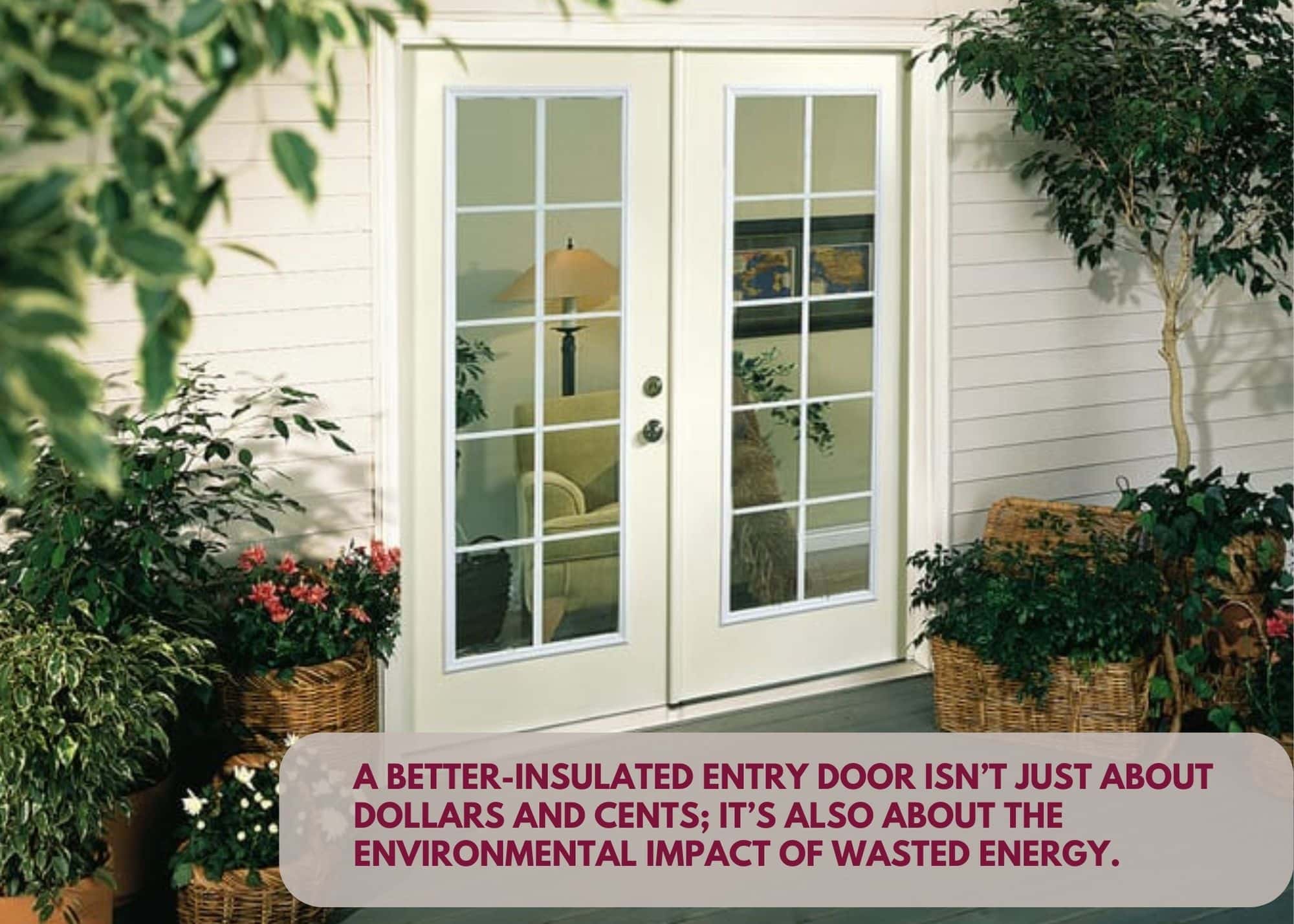
Inefficient doors contribute to a larger carbon footprint. So, how can we improve this situation and make a difference? Let’s look at some solutions.
Types of Energy-Efficient Entry Doors
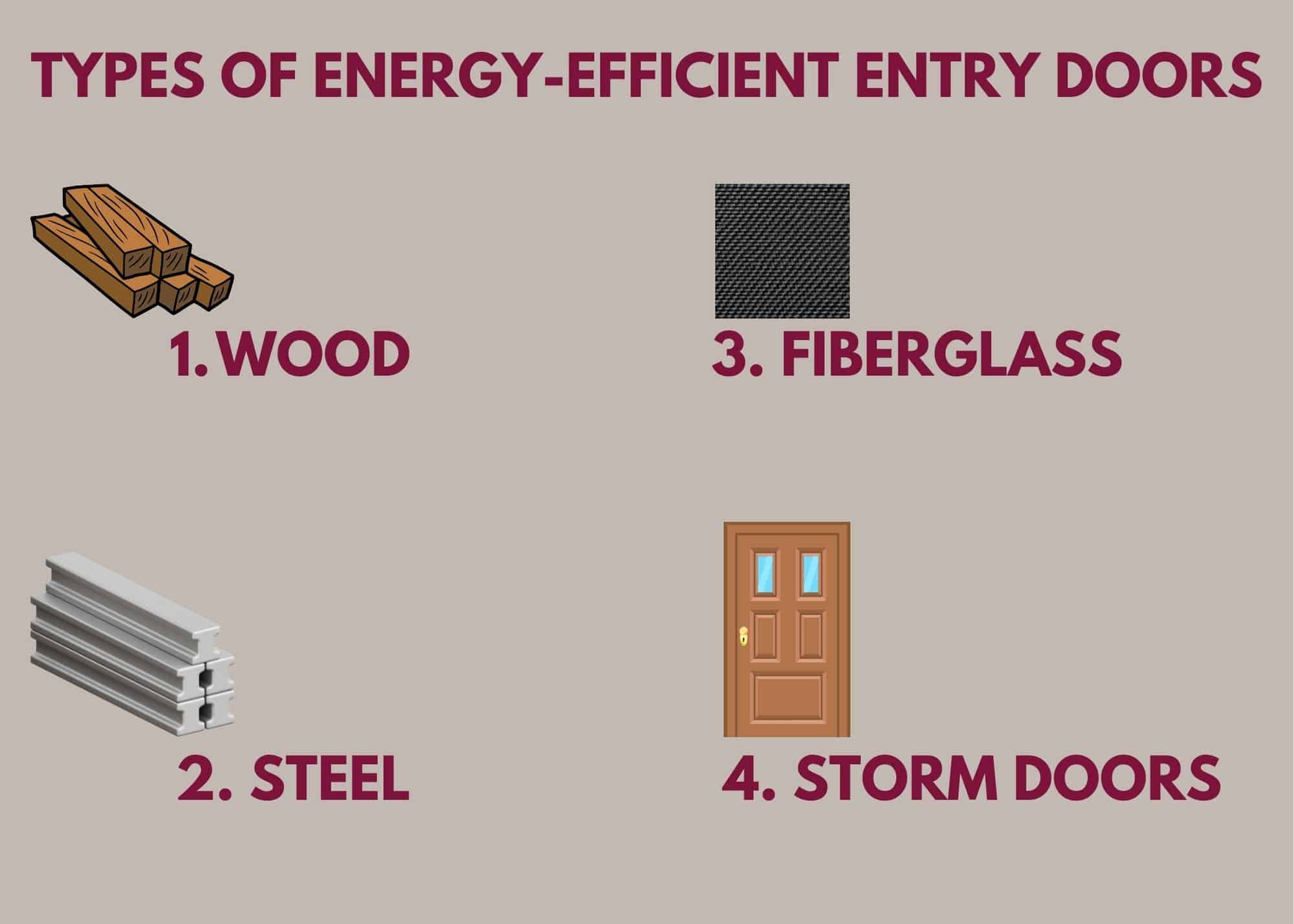
The material of your entry door significantly affects its insulation properties. Three of the most popular materials for entry doors are fiberglass, steel, and wood doors. We’ll talk about the unique advantages and disadvantages of each later in the blog.
- Wood: Wood doors exude classic charm and elegance. However, they require more maintenance, and while wood is a good insulator, it may not provide the same level of insulation as fiberglass or well-insulated steel doors. Still, technological advancements and clever engineering offer innovative solutions for improving the insulation of wood doors.
- Steel: Steel doors offer superior security and are generally more affordable than fiberglass. Modern steel doors incorporate advanced insulation techniques for better energy efficiency, making them an attractive option for budget-conscious homeowners.
- Fiberglass: Fiberglass doors are excellent insulators, known for their durability and resistance to dents and scratches. They mimic the look of wood without the high maintenance. They often come with high energy-star ratings and are relatively easy to maintain.
- Storm Doors are additional doors added to your entry that provide extra insulation and protection from the elements, among other functions.
If you’re interested in learning more, we’ve got blogs where you can learn more about storm doors and entry doors.
Wood Entry Doors: Classic Charm Meets Modern Insulation
The appeal of wood entry doors remains strong. Wood is versatile, highly customizable, and timeless.
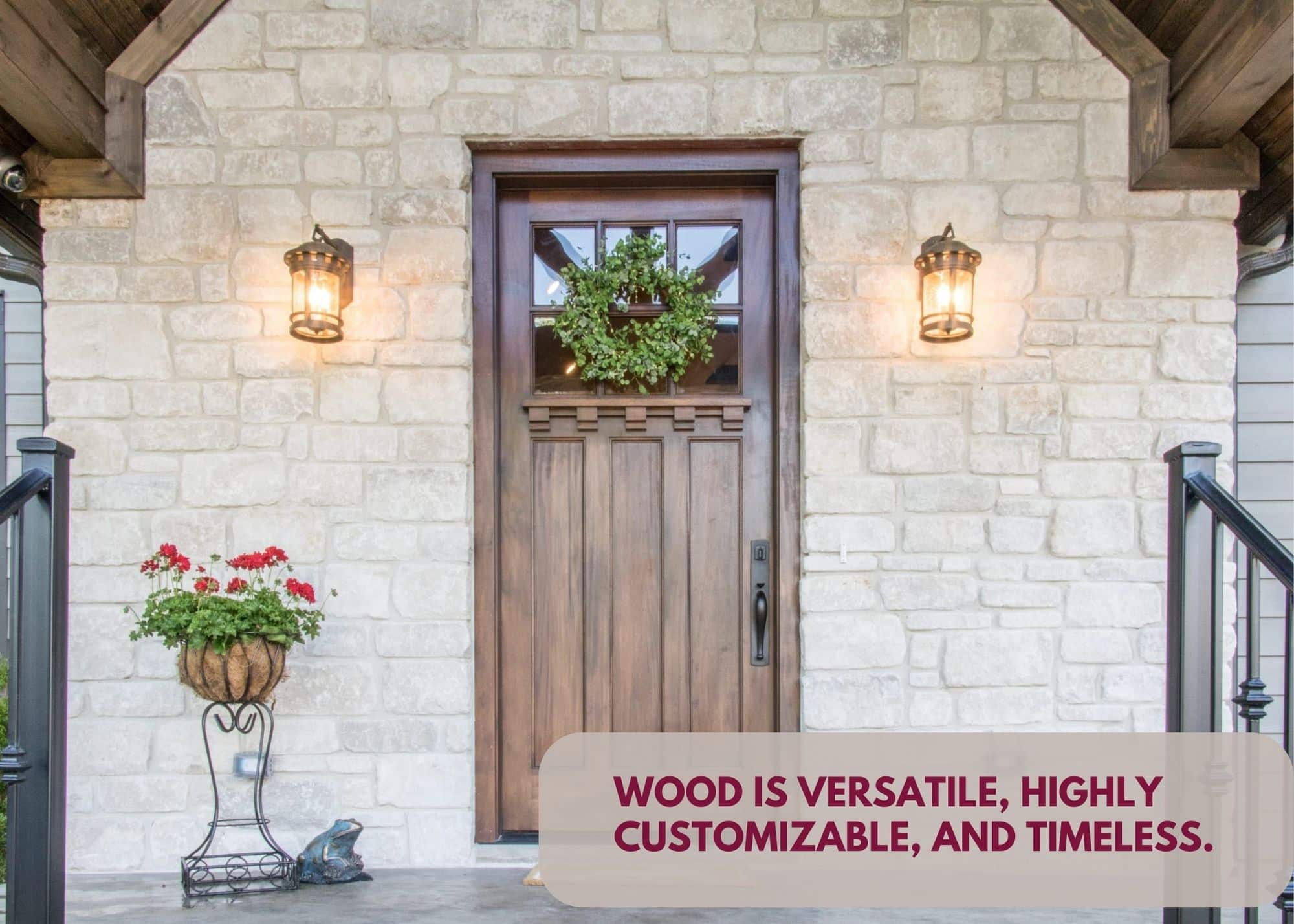
A wooden door will work perfectly in a classical or contemporary-style home.
Consider these factors when buying a wood entry door:
- Variability in price: Wood doors have the most range in style, customization, quality, and materials compared to other entry door materials, allowing many price points from basic prehung doors to custom solid-wood designs with premium features.
- High-tech wood doors: While wood is a natural insulator, advances in engineering have enhanced the R-value of modern wooden entry doors. To ensure energy efficiency, look for doors with advanced insulation technologies.
- Wood doors require more maintenance: Wood’s susceptibility to weather and insect damage necessitates proper maintenance. Fortunately, there is a wealth of knowledge about the world’s oldest building material, from how to repair a wooden door to repainting or refinishing your door.
Steel Entry Doors: Security and Efficiency Combined
Steel entry doors offer a robust blend of security and energy efficiency.
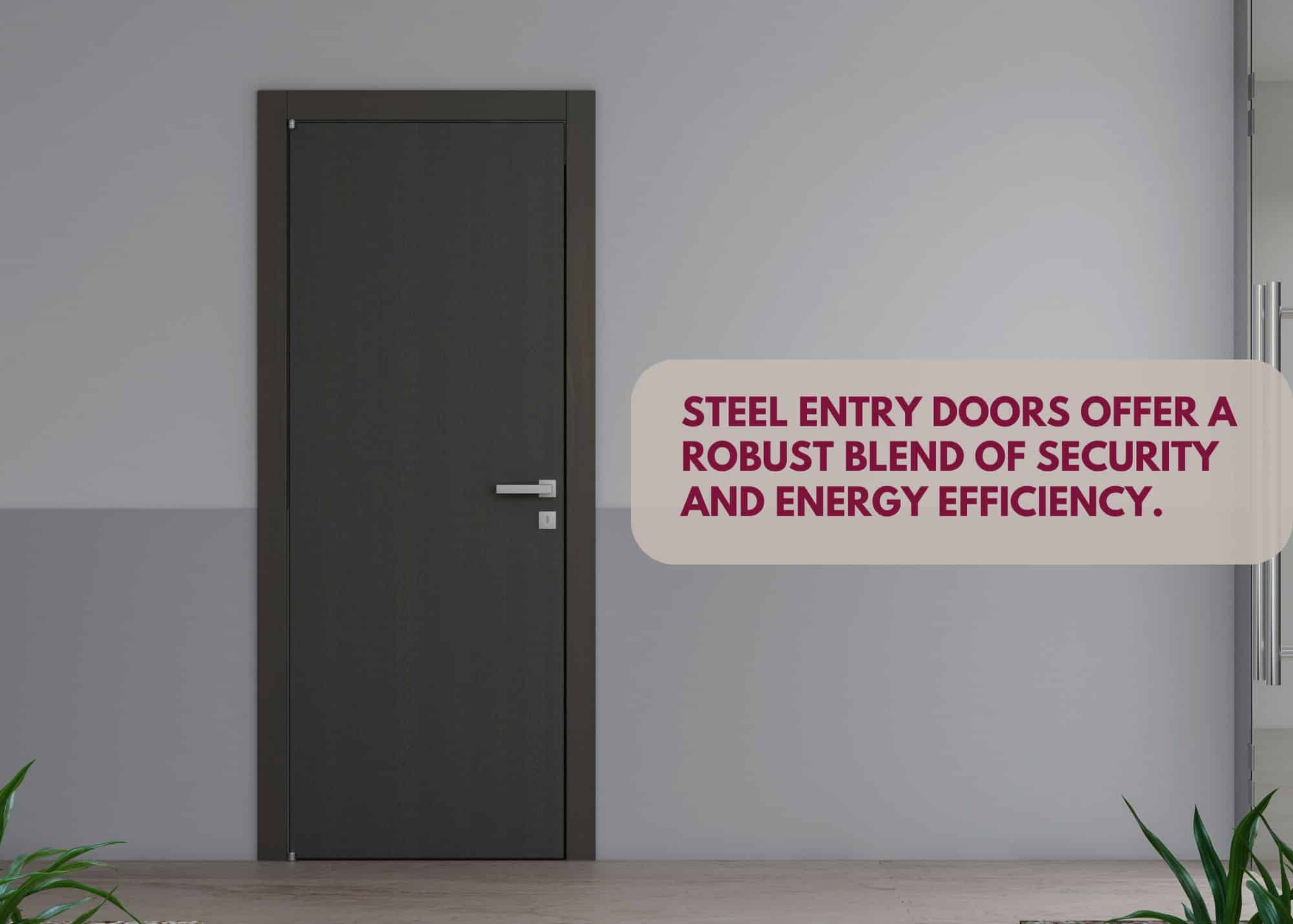
Advancements in steel door manufacturing incorporate innovative insulation techniques, improving their thermal performance. Steel is also a strong, fire-resistant material that resists break-ins.
When shopping for a steel door, consider the following:
- Insulation: Seek out steel doors insulated with polyethylene foam. When properly installed, these doors are energy efficient and withstand air and water infiltration. Some steel doors are hollow but could be insulated as a DIY project. However, experts recommend a door with factory-installed insulation as they are finished to a higher standard.
- Low Maintenance: Steel entry doors are very low-maintenance compared to other materials such as wood. They’ll resist chipping and peeling and are as easy to clean as a simple wipe-down with a damp cloth. However, steel’s malleability also means it dents with sufficient force – but you can quickly patch those dents!
- Modern Aesthetics: Steel doors are always a popular option for more industrial or contemporary looks.
Fiberglass Entry Doors: The High-Efficiency Choice
Fiberglass doors stand out for their exceptional insulation capabilities. They provide superior energy efficiency, reduce energy loss, and keep your home comfortably regulated year-round.
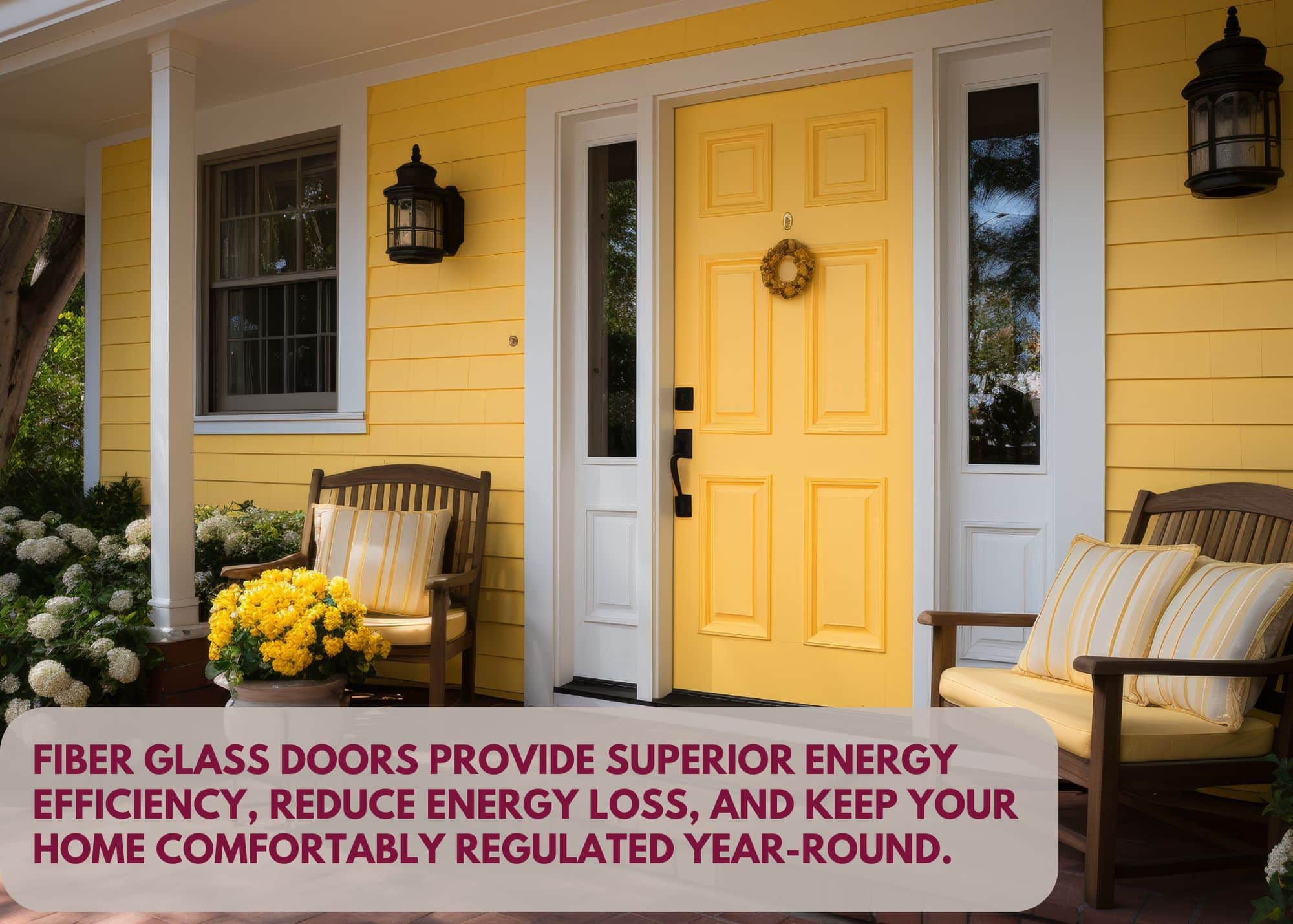
They translate to considerable cost savings on your energy bills, making the initial investment highly worthwhile.
While fiberglass doors are durable and less likely to be damaged by dents, dings, cracking, and splitting compared to wood or steel doors through everyday handling, they can dent or crack if hit hard enough with sufficient force. Fiberglass doors are also more costly, so consider the upfront investment before gaining the benefits of better energy efficiency.
If you’re considering a fiberglass door, here are some key features to look for:
- High Energy Star ratings: Fiberglass doors have a high R-value, but not all are made equally. Compare different models to find the best balance between cost and performance. While glass is not a good insulator, look for windowed doors with specialized glazing or coatings to enhance their insulating properties.
- Low-maintenance surfaces: Textured surfaces can cause dirt to get trapped, requiring a more thorough cleaning. Consider aesthetics versus convenience when selecting a fiberglass door.
- A variety of styles to match your home’s aesthetic: Molding technology allows for many styles to suit your tastes, and some even mimic the look and texture of wood grain. Make a good first impression with a classy front door!
Storm Doors: An Optional Addition
Despite the exciting name, a storm door isn’t for making dramatic exits but is an optional, additional layer of protection from the elements. A properly installed storm door can provide extra rain and wind protection while keeping your doorway dry.
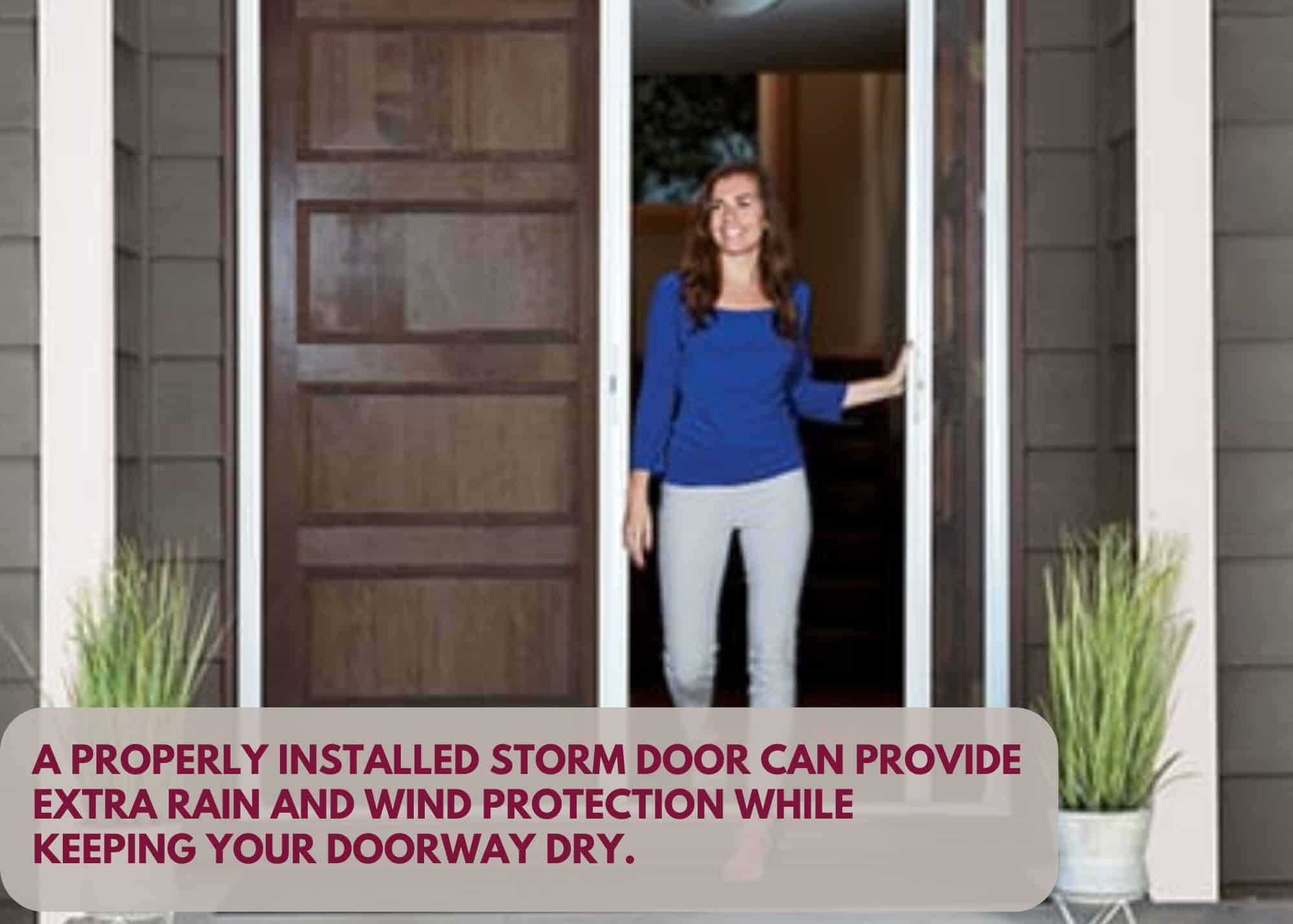
It can function as a window – perfect for letting in some sunlight through the front door or getting a better view out the front door while maintaining privacy.
Since storm doors are practically glass windows mounted on a door frame, they are highly susceptible to shattering from high impacts. A storm door doesn’t insulate well either, and even with a form core, the amount of insulation provided is negligible, especially if you have a newer entry door.
Look into these factors before buying a storm door:
- Storm doors don’t save much more energy. Remember that storm doors keep wind and rain out instead of providing insulation. During the colder seasons, a closed storm door and an opened entry door will help retain some heat, but not as efficiently as a closed entry door.
- Look for quality glass: High-quality storm doors include low-emissivity (Low-E) glass or glazing to increase energy efficiency.
- Sun exposure: Consider how much sunlight your entry door gets. If the door gets more than a few hours of direct sunlight daily, the glass from a storm door could also trap heat and damage your entry door over time.
Benefits of Upgrading Entry Door Insulation: More Than Just Savings
Upgrading your entry door’s insulation yields multiple benefits, from immediate cost savings reflected in lower energy bills and a noticeable increase in home comfort to enjoying more consistent indoor temperatures.
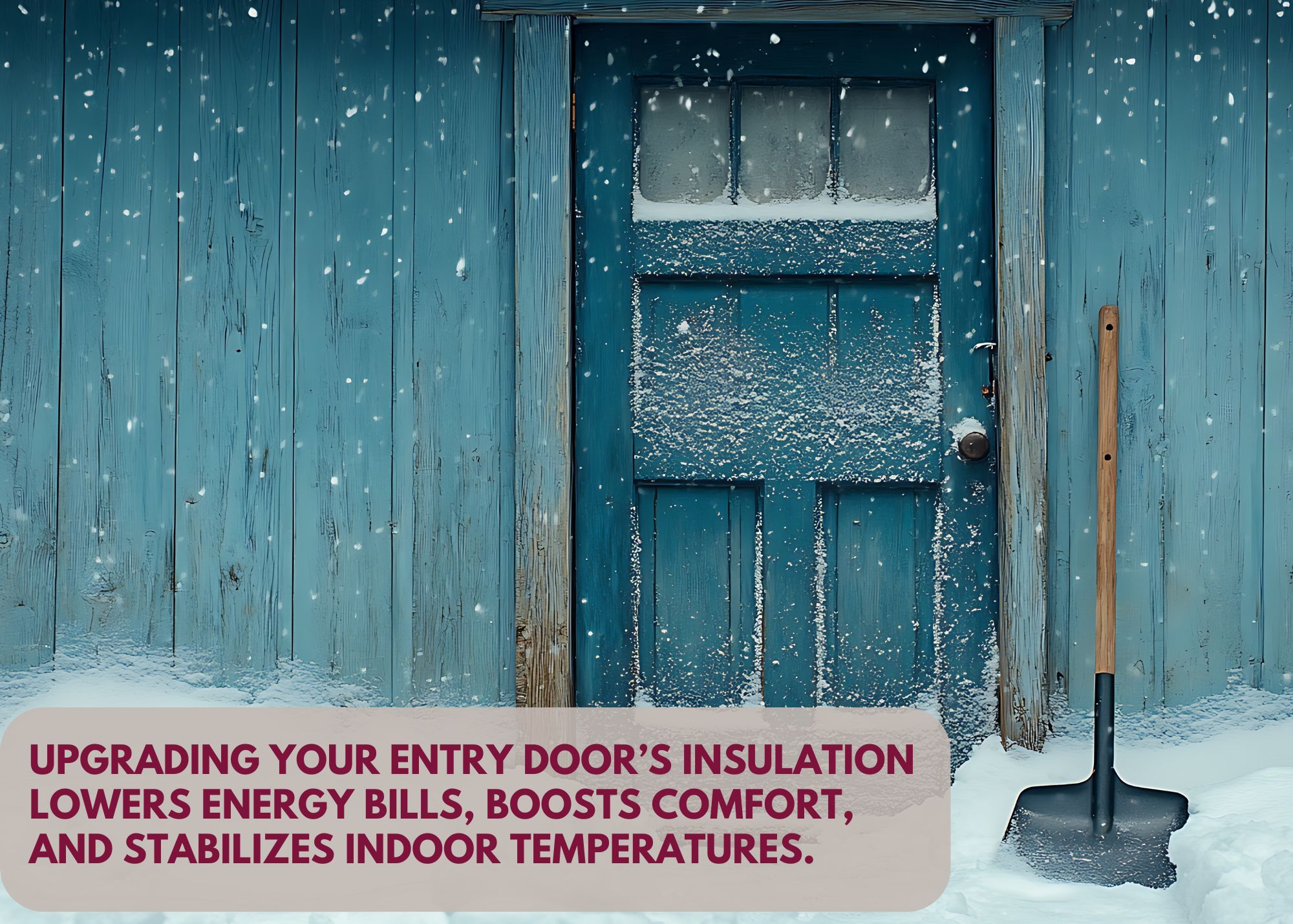
Reducing energy consumption also contributes to a smaller carbon footprint, which benefits the environment.
Choosing the Right Insulated Entry Door for Your Needs
Choosing the ideal entry door involves careful consideration of several factors. One factor is your local climate; a door suitable for a mild climate may not perform as well in extreme temperatures. Your home’s architectural style and design preferences will also influence your decision.
On our blog page, you can learn more from our additional discussion on entry doors and our deep dive into storm doors. You should also consider investing in more energy-efficient windows, and we can help you get started with our guide to replacement windows.
Conclusion
Having a door isn’t just for privacy and keeping the elements out – a beautiful door is inviting and adds to your home's curb appeal and a touch of style.
At Graber Supply, we want you to have access to quality home-building supplies and services customized to your needs! That’s why we carry a range of beautiful and efficient entry and storm doors in various styles. We are also your local North Central Indiana Anderson Doors and Windows dealer.
Contact us today and step into better energy efficiency!









